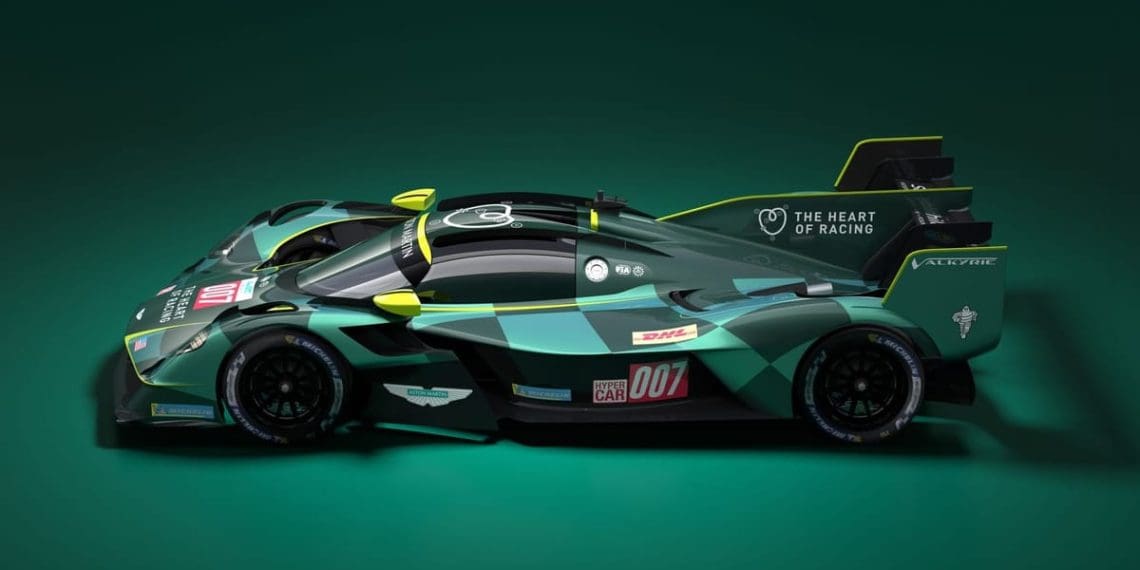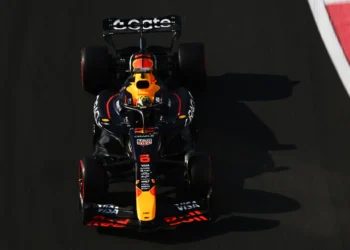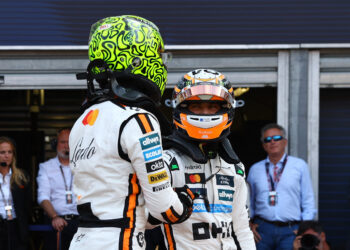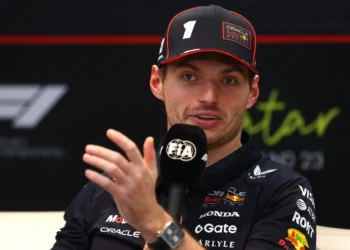Aston Martin has officially revealed the six drivers who will spearhead its highly anticipated Valkyrie Hypercar program in both the IMSA SportsCar Championship and the World Endurance Championship (WEC) in 2025. But while the lineup boasts talent, there are no superstar names, raising the inevitable question: is this the right call for a project of this magnitude?
With Toyota, Ferrari, and Porsche assembling endurance racing’s most battle-hardened rosters, Aston Martin has taken a different approach, betting on familiarity, loyalty, and long-term investment rather than established prototype experience.
Who Made the Cut?
Aston Martin’s The Heart of Racing (THOR) squad will field two Valkyrie Hypercars in WEC, each driven by a duo backed by an additional IMSA driver at Le Mans:
WEC Entries:
- #007 Valkyrie: Harry Tincknell, Tom Gamble (+ Ross Gunn for Le Mans)
- #009 Valkyrie: Marco Sørensen, Alex Riberas (+ Roman De Angelis for Le Mans)
IMSA Entry:
- #23 Valkyrie: Ross Gunn, Roman De Angelis
At first glance, the selections seem logical yet underwhelming. Tincknell and Sørensen are undeniable talents, but the rest of the crew—Gamble, Riberas, Gunn, and De Angelis—are primarily GT specialists, a far cry from the experience-laden rosters of their rivals.
Why This Lineup? The Logic Behind Aston Martin’s Selection
Aston Martin Team Principal Ian James is unapologetic about his choices, insisting that this is a lineup built on talent and trust.
“To be running a car at the premier level with Aston Martin, and a car which is widely accepted as one of the most beautiful in the world—the only one that is the genuine progeny of a road car—is a real honor,” James said.
Aston Martin’s endurance boss Adam Carter doubled down, explaining that the lineup was not a last-minute decision, but rather the result of a meticulous testing process:
“We set out with a view of who we thought could be in the driver line-ups, and we’ve effectively made our choices by going and comparing against the relative references to actually decide on the final crews.”
In other words, every driver has earned their place through performance, not reputation.
The Key Players: Tincknell and Sørensen Hold the Keys to Success
Harry Tincknell is the most experienced prototype racer in the lineup. Having developed the Valkyrie road car, he was an easy choice for the program, with Le Mans-winning pedigree in both LMP2 and GTE Pro.
Marco Sørensen, on the other hand, may not have prototype experience, but he is a three-time WEC champion with Aston Martin, a veteran of high-pressure GT battles, and one of the most successful endurance racers to wear the British marque’s colors.
Both drivers will be crucial benchmarks against which the rest of the team will be measured.
The Wildcards: Can the GT Specialists Handle the Hypercar Jump?
The biggest gamble comes from the other four drivers, all of whom have made their names in GT racing rather than prototypes.
- Tom Gamble: 2020 European Le Mans Series LMP3 Champion, but has largely raced GTs since.
- Alex Riberas: Proven GTD Pro winner in IMSA but has never raced in the Hypercar class.
- Ross Gunn: One of the best GT drivers in the world, but again, no Hypercar experience.
- Roman De Angelis: A rising star, but still largely unproven at the top level of endurance racing.
While Aston Martin argues that modern Hypercars resemble “big GTs” more than the aero-heavy LMP1 monsters of old, the reality remains: these drivers will be going up against the likes of Sébastien Buemi, Kévin Estre, Antonio Fuoco, and Kevin Magnussen—all of whom are seasoned prototype warriors.
Can Aston Martin Compete with the Big Guns?
Aston Martin has clearly taken inspiration from Ferrari and Porsche, both of whom have successfully integrated GT drivers into their Hypercar programs. However, while names like Matt Campbell and Mathieu Jaminet have proven their ability to transition to LMDh, Aston Martin’s lineup lacks a true heavyweight prototype driver beyond Tincknell.
Toyota, by contrast, only fields drivers with extensive experience in high-downforce machines—a formula that has delivered five consecutive Le Mans victories.
A Dream Opportunity—But Can They Deliver?
There’s no denying that this is a dream opportunity for the chosen six. They are now on motorsport’s biggest stage, carrying the weight of Aston Martin’s return to top-class endurance racing. But will this GT-heavy squad hold its own in a Hypercar arms race dominated by prototype experts?
On paper, the match looks one-sided. But in endurance racing, numbers and reputations mean nothing once the green flag drops.
Now, it’s up to Gamble, Riberas, Gunn, and De Angelis to prove that Aston Martin’s faith in them was justified. If they falter, questions will arise about whether Aston Martin should have taken a more conventional approach.
But if they rise to the challenge, this could go down as one of the boldest and most successful talent bets in endurance racing history.










